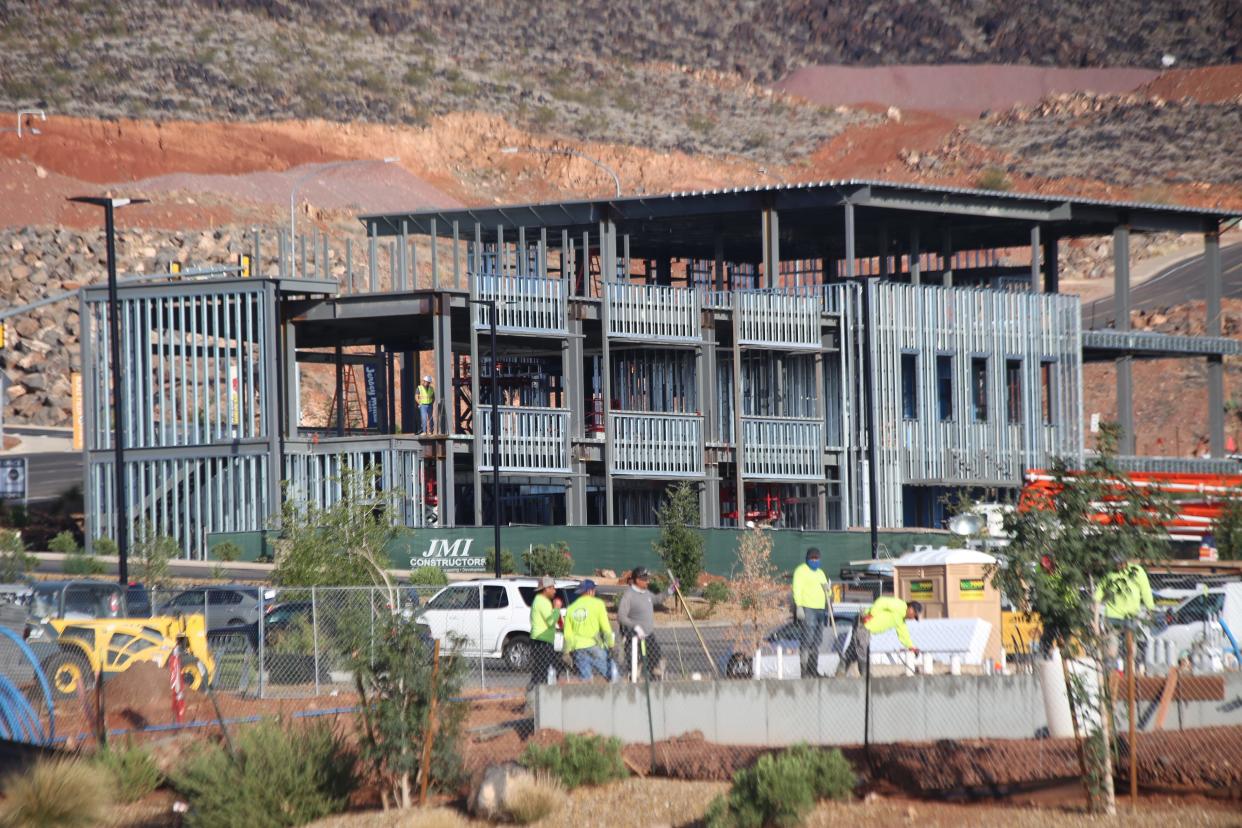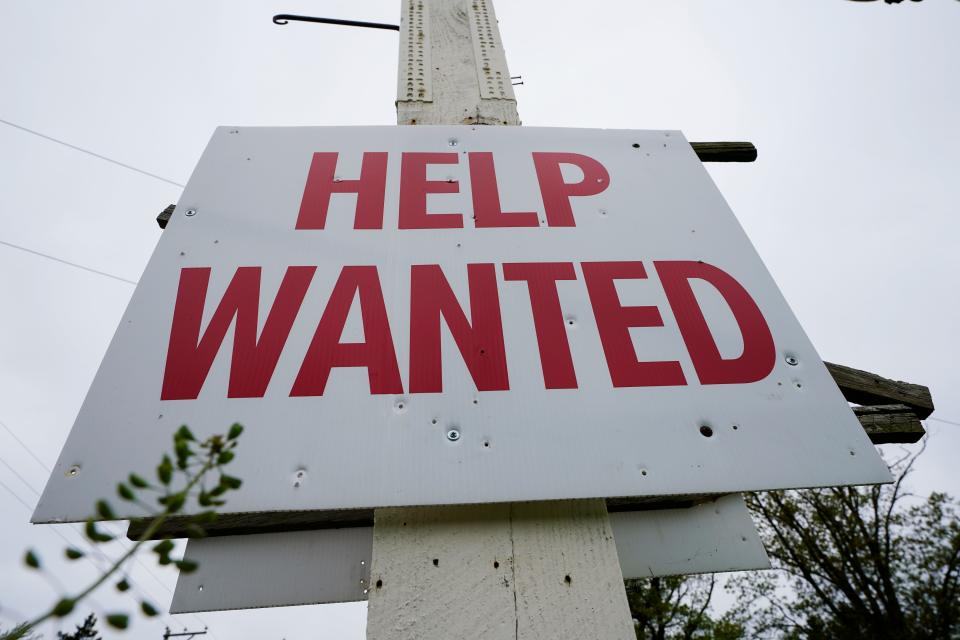Utah's job growth rate is slowing. But does that mean recession?

Utah added about 35,000 new jobs in the 12-month period between September 2022 and September 2023, a 2.1% year-over-year increase that would be the envy of most states across the U.S., but a marked slowdown from previous months.
The unemployment rate, adjusted for seasonal variations, remained near historic lows at just 2.6%, but it too was rising, having gone up a tenth of a percentage point from the previous month, according to figures reported by the Utah Department of Workforce Services. That bucked a national trend, with hiring nationwide on the rise, according to the Bureau of Labor Statistics.
"The Utah economy has started to show signs of moderating from its rather breakneck pace of the past year," said Mark Knold, the chief economist at the DWS. "The job market remains attractive. But the pace of job growth is moderating. At 2.1% growth, September’s job gains are the slowest since February 2020."
And while the unemployment rate remains low, it has been steadily rising, Knold said.
"Unemployment remains very low at 2.6%, but it has risen by three-tenths of a percentage point since May," he said. "Finding adequate labor can still be a challenge for some businesses, but not nearly the struggle that it was throughout most of the past 12 months."
Utah still outpaced most other states for job growth, and the unemployment rate was still much lower than the national average of 3.8%.
The private sector counted a 1.9% year-over-year increase in jobs, led by big jumps in the Leisure and Hospitality Services industry sector (9,700 new jobs) and in education and health services (7,700). There were two sectors that counted job losses, with 2,000 fewer jobs reported in trade, transportation and utilities and 1,000 fewer jobs in manufacturing.
More in-depth analyses and data tables are available at https://jobs.utah.gov/wi/update/index.html.
Is the US headed for a recession?

The U.S. job market is emphatically shrugging off predictions of a recession in the next few months.
Employers stepped up hiring sharply in September, adding a booming 336,000 jobs despite high interest rates and inflation. That's the strongest monthly gain since January.
The unemployment rate held steady at 3.8%, the Labor Department said Friday.
Economists had estimated that 170,000 jobs were added last month, according to a Bloomberg survey, extending a recent trend of slowing job growth.
Instead, job gains for July and August were revised up by a combined 119,000, pushing the advances for each month over 200,000 and painting a more robust picture of summer hiring than previously thought.
"The U.S. labor market clearly still has some gas in the tank," says Nick Bunker, head of economic research for Indeed, a top job site.
At Arcalea, a Chicago-based supplier of marketing technology such as artificial intelligence, sales are roughly flat this year, says CEO Michael Stratta. But the 18-employee company is adding three or four data scientists and business development specialists in the coming months as it girds for growth in 2024.
Stratta says he’s weary of longstanding forecasts of a recession that never seems to arrive.
“We’ve actually stepped up hiring because the predictions of the last few years have not come to pass,” Stratta says. “We’re almost fatigued at the messaging.”
Will the Fed raise rates again?
While strong job gains are normally welcomed, the report likely raises the odds that the Federal Reserve will raise interest rates again next month to tamp down job and wage growth that could be fueling inflation, says economist Rubeela Farooqi of High Frequency Economics. A separate report this week showed that job openings jumped in August after trending lower in prior months.
The Fed is nearing the end of an aggressive rate hike campaign but has said it would move again if the economy and inflation don't show evidence of cooling on a sustained basis.
Yet some economists say the Fed is probably done. The central bank is focused less on total job gains and more on the unemployment rate, which has risen notably in recent months as more people stream into a healthy labor market, says Ian Shepherdson, chief economist of Pantheon Macroeconomics. The larger labor supply should allow wage growth and inflation to continue to drift lower, he says, because employers don't need to compete as intensely to attract workers.
Dow
The Dow Jones industrial average reversed early losses sparked by concerns that the big job gain would mean another rate hike. investors instead were encouraged that the moderation in wage growth could allow Fed officials to stand pat. The Dow was up 363 points in late-afternoon trading and the S&P 500 index was up 1.37%.
10-year Treasury
The 10-year Treasury bond rose 0.07 percentage point to 4.78%, similarly paring a larger rise earlier that was triggered by the anticipation of higher rates.
How fast are wages growing?
Average hourly earnings rose 7 cents to $33.88, nudging down the yearly increase to 4.2% from 4.3%. That should be positive news for the Fed but it’s still too high as officials seek to lower annual pay increases to 3.5% to align with theirs 2% overall inflation target. Wage growth topped 5% last year amid severe COVID-related labor shortages.
What is the easiest industry to get a job in?
In September, leisure and hospitality, which includes bars and restaurants, led the job gains with 96,000, resuming its previous strong hiring as it recovered from massive COVID-related job losses. In recent months, the sector had been recording weaker gains.
Government added 73,000 jobs, partly reflecting the return of teachers. Health care added 41,000 jobs; professional and business services, 21,000; and retail, 20,000.
September had been shaping up as something of a wild card for employment growth. The return of school teachers and the departure of students from summer jobs made it challenging for officials to make their usual seasonal adjustments to the figures, says economist Nancy Vanden Houten of Oxford Economics.
Initial employment estimates for September are typically revised up sharply and Goldman Sachs reckoned that Friday’s tally ultimately will be upgraded by about 45,000.
Then there was the ongoing strike of 25,000 United Auto Workers employees, though that began after Labor’s survey and so isn’t figured in last month's totals, economists said.
Is the job market still strong?
More broadly, average monthly payroll growth has slowed to a still sturdy 266,000 over the summer from more than 300,000 early this year now that the millions of jobs wiped out in the pandemic have been recovered. Forecasters, though, have been surprised the downshift hasn’t been sharper in light of the Federal Reserve’s 5.25 points of interest rate hikes since early 2022.
In an interview, Acting Labor Secretary Julie Su said the job market is still cooling despite the blockbuster September and upward revisions for the summer months. She noted that monthly gains a year ago were averaging 423,000.
"These numbers are a sign of steady, stable growth," she said.
Are companies laying people off now?
The resilient labor market largely has been traced to companies’ reluctance to lay off employees following two years of pandemic-related labor shortages. Jobless claims, a gauge of layoffs, have stayed low.
To be sure, large companies have pulled back hiring and even cut workers, especially in technology, as borrowing costs have spiraled higher. But many small and midsized businesses that struggled to attract workers are snapping up those laid off and drawing from a more plentiful labor supply as Americans sidelined by COVID return to the workforce, says Jim McCoy, senior vice president of ManpowerGroup, a staffing firm,
Dan Yates, CEO of Endeavor Bank in San Diego County, says the community bank wants to lure employees at large financial institutions “that may be interested in moving their talents to our growing bank.”
Others, however, say rising interest rates are finally dampening sales, prompting them to scale back hiring.
Higher borrowing costs have discouraged biotech and pharmaceutical companies from adding workers for research and development, says Ross Petras, managing partner of Biotech Partners, a staffing firm based in Charlotte, North Carolina. As a result, he says, job placements are down about 78% in the past year and Petras has slashed his recruiting staff from 11 employees to four, turning to less expensive overseas contractors to fill in gaps.
“I’ve never seen it fall off a cliff like it did at the end of” the summer of 2022, Petras says.
For the labor market overall, a more dramatic slowdown probably lies ahead, says Troy Ludtka, senior U.S. economist for SMBC Nikko Securities Americas.
Job gains have been revised down every month through the first half of the year - a streak that was broken by Friday's upward revisions for July and August. That's typically a harbinger of a significant weakening in hiring and a rise in layoffs, Ludtka says.
Contributing: USA TODAY, The Associated Press.
This article originally appeared on St. George Spectrum & Daily News: Utah's job growth rate slows, unemployment rate rises

